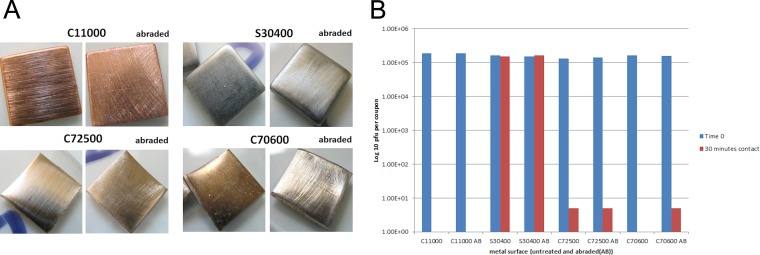FIG 3.
Comparison between two copper nickels, C72500 and C70600) containing 89% copper. (A) Appearance of copper alloys, i.e., abraded and unabraded (copper and stainless steel controls). (B) Abrasion of the oxide layer on C70600 slightly reduces antiviral efficacy. Approximately 5 × 105 PFU of infectious virus was applied to 1-cm2 samples of abraded and unabraded metal coupons and incubated at room temperature. At various time points, virus was removed from the surfaces and assessed for infectious virus particles by plaque assay as described in the text. Abrading the surface of alloy C72500 did not make any difference in its efficacy in inactivating MNV. It is unclear whether the tin content of this alloy affects efficacy. Abrading the surface of alloy C70600 reduces antiviral efficacy; i.e., the alloy surface has an effect on MNV.

